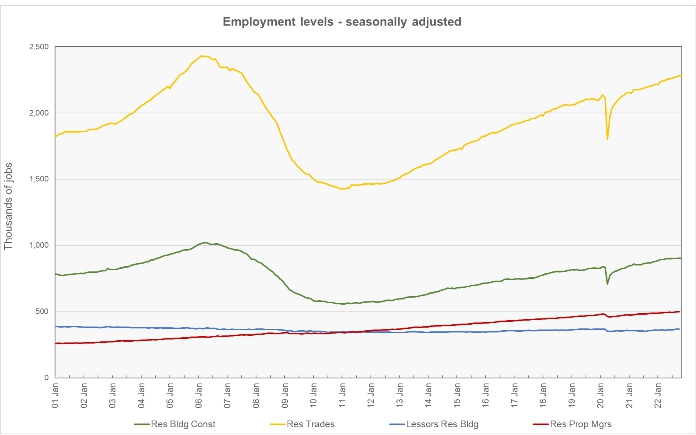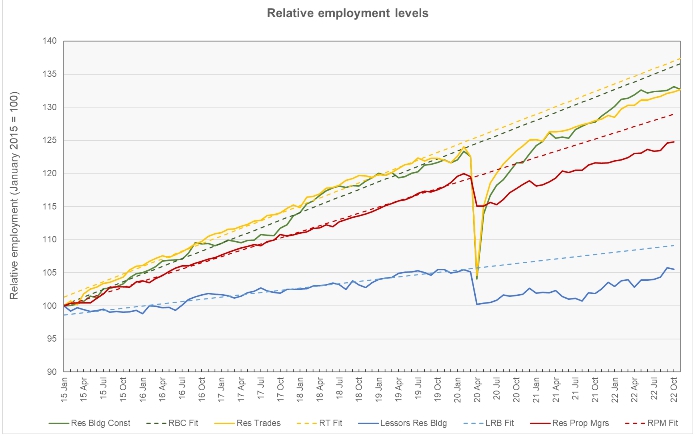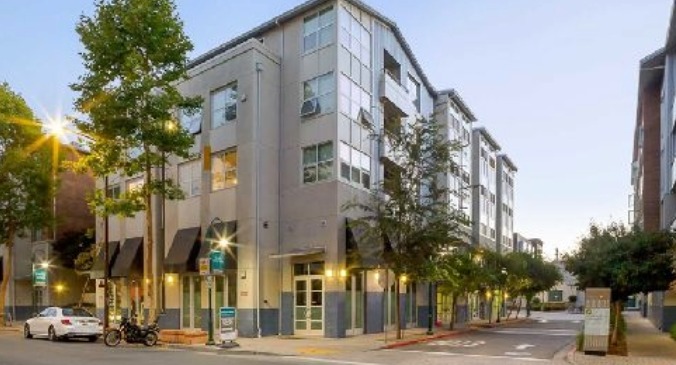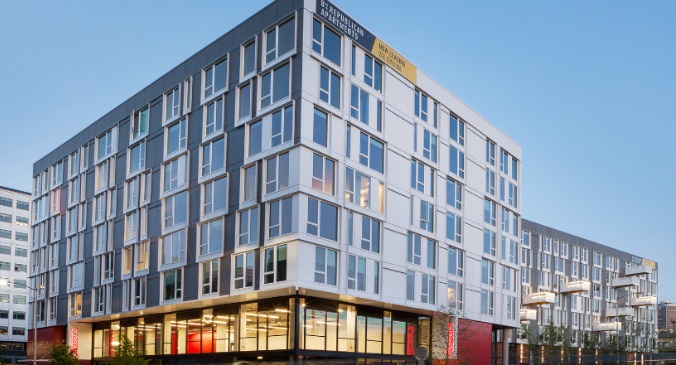The Employment Situation Report from the Bureau of Labor Statistics stated that employment in both residential construction and in apartment operations edged higher in November.
Economy continues to add jobs
The Bureau of Labor Statistics (BLS) reported that employment increased by 263,000 jobs in November, based on their survey of business establishments. The BLS also revised the increase in employment in October upward by 23,000 to 284,000 jobs, although the September increase was revised down by 46,000 to 269,000 jobs.
The BLS household survey reported that the US unemployment rate remained unchanged at 3.7 percent. Compared to the previous month, the household survey found that the number of employed persons fell by 138,000 while the number of unemployed persons fell by 48,000.
The household survey found that the number of people in the civilian labor force fell by 186,000 in November despite the adult population rising by 173,000. These changes caused the labor force participation rate to tick down 0.1 percentage point to 62.1 percent. It had been at 63.4 percent before the pandemic. Recovering that 1.3 percent decline in the labor force participation rate would bring 3.4 million more people into the workforce.
Multifamily employment gains
The BLS reported more detailed employment information on four job categories of interest to the multifamily industry. These are employment as residential construction workers, as specialty trades within residential construction, as residential property managers and as lessors of residential buildings. As usual, some of the data is reported with a month delay, so the latest figures for the latter two categories are for the month of October.
The first chart shows the long-term history of the levels of employment in these four jobs categories.

Residential construction employment higher
Employment in residential building construction in November, usually with general contractors, was reported to be down 2,600 jobs from the revised (+1,500 jobs) level of the month before. Employment in this category is now 902,600 jobs, up 3.2 percent year-over-year and 7.6 percent higher than its level in February 2020.
Employment in residential building trades, i.e. plumbers, electricians, etc., in November was reported to be up 6,500 jobs (0.3 percent) from October’s revised (+4,100 jobs) figure at 2,284,300 jobs. Employment in this category is up 3.5 percent year-over-year and is now 7.0 percent above its level in February 2020.
Total November employment in these two categories of residential construction jobs combined was up 0.12 percent from the revised level of the month before and was up 0.30 percent from the preliminary level reported last month. Construction employment was 7.1 percent above its level in February 2020.
Apartment operations jobs rise overall
Employment for residential property managers in October was reported to be up by 700 jobs (0.1 percent) from its revised (+500) level for September to 500,400 jobs. Employment for residential property managers is up 2.6 percent year-over-year and is up from its February 2020 level by 4.0 percent.
Employment for lessors of residential buildings was reported to fall in October by 700 jobs to a level of 369,000 jobs. However, the prior month’s employment figure was revised upward by 1,200 jobs. Employment in this category is up 3.6 percent year-over-year and is now 0.1 percent above its pre-pandemic level.
Total employment in these two categories combined was reported to be unchanged for the month from the revised levels of the month before but up 0.2 percent from the preliminary levels reported last month. It is now 2.3 percent above its level in February 2020.
A closer look
The final chart, below, presents the employment data in a different format. It normalizes the employment levels in all four jobs categories to a reading of 100 for January 2015. It also provides trend lines for the growth in each of the categories of employment based on the period from January 2015 through February 2020.

This presentation makes recent changes in employment levels in these categories more visible. It also shows that the growth in employment for all of these categories has not returned to the trend that existed before the pandemic, although the construction job categories come closer than do the apartment operations job categories.
The numbers given in the Employment Situation report are seasonally adjusted and are subject to revision. It is common for small adjustments to be made in subsequent reports, particularly to the data for the most recent month. The current Employment Situation report can be found here.













